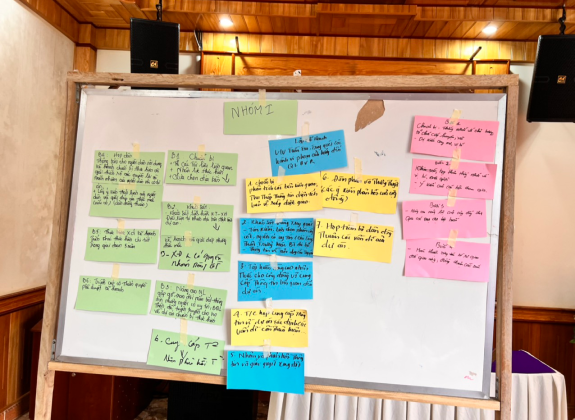Community Forest Land Rights

Facing the Problem

Community forest land rights refer to the community’s right to own and use land and forests. In Vietnam, land is owned by the entire people and managed by the state as the representative of the owner, which grants community forest land rights. This right is established and recognized by the community over generations, becoming a tradition in access, ownership, management, use, decision-making, and implementation within the community.
However, due to the planning and land management policies of countries and periods of upheaval, many communities, despite effectively managing and protecting forests, do not have formal rights to forests under government policies.
Reforms have been made in several African, Asian, and Latin American countries, including Brazil, Nepal, the Philippines, and India, to ensure community forest land rights, including community forest allocation and recognition of community ownership or co-management between stakeholders, including the state and the community.
Currently, many developing countries, such as Brazil, Nepal, the Philippines, and India, have implemented reforms to ensure community forest land rights. These reforms include community forest allocation, recognition of community ownership, or co-management between stakeholders, including the state and the community.
However, the implementation of forest tenure rights by communities is still limited in some cases. For example, many communities are allocated low-quality forests that require significant human and material resources to renovate. This is a common situation, especially in Ghana and Asian countries. Additionally, rights granted through less binding instruments, such as decrees, regulations, and contracts, may be more fragile, especially if they are unilaterally terminated.

In Vietnam, the 2017 Forestry Law and the 2013 Land Law recognized communities as forest owners and land users, respectively. The government has assigned nearly 1.2 million hectares of forest for community management, of which nearly 1.1 million hectares are natural forests. This is an important step in the process of land and forest allocation in Vietnam, demonstrating the state’s recognition of the community’s rights to forest land.
However, there are still shortcomings in the process, such as when poor or remote forests are allocated to communities, when communities manage and conserve forests but have not been allocated forests, or when there are no supporting policies after allocating forests to communities for good governance.
HOW TO SOLVE
These Problems?
Applying indigenous knowledge in promoting sustainable development
In recent years, countries around the world have begun implementing traditional policies to ensure forest land rights for communities. This change began in 1985 and increased sharply from 22% to 27% between 2002 and 2008 (Sunderlin et al. 2008), and is currently showing good progress.
In Vietnam, community forest land rights have been recognized by law through the reform of legal documents such as the Law on Forest Protection and Development 2004 (now the Law on Forestry 2017) and the Civil Code 2015. Programs to monitor and promote forest return from SFEs have also focused on traditional allocation of forests by ethnic minorities and communities living near forests. Vietnam’s government has been making efforts to ensure sustainable development by ensuring forest land rights for the community.
Solution from CEGORN
CEGORN has been working towards supporting communities to ensure their traditional forest land rights, and contributing practical lessons to the development and improvement of policies for the State. To achieve this goal, CEGORN has carried out community-based forest development models and traditional forest land rights studies. The organization has supported the traditional allocation of land and forests to the Co Tu communities in Kon Tum, the communities in Lao Cai, and the Chut, Bru-Van Kieu, and Kinh communities in Quang Binh. More than 5,000 hectares of forest have been allocated to the community in total.
We have been implementing pilot models to support the development of effective management after community forest allocation, ensuring people’s rights. This includes supporting the community to develop regulations and conventions on community forest management that are in accordance with the law. The organization is also promoting the establishment of community forest management boards, village voluntary conservation groups, and models of livelihood development under the forest canopy based on the community’s customs and practices.

Related articles

